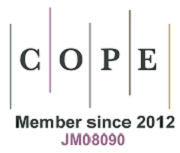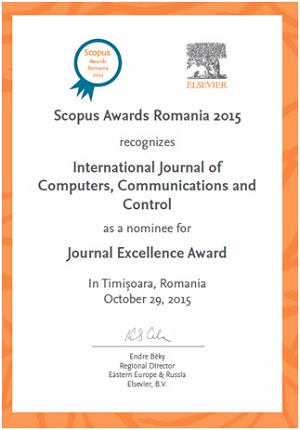Error Correction Method in Classification by Using Multiple-Criteria and Multiple-Constraint Levels Linear Programming
Keywords:
Classification, Two Types of Error, Multiple-Criteria Linear Programming, Multiple-Criteria and Multiple-Constraint Levels Linear Programming, Decision Supporting SystemAbstract
In classification based on multiple-criteria linear programming (MCLP), we need to find the optimal solution of the MCLP problem as a classifier. According to dual theory, multiple criteria can be switched to multiple constraint levels, and vice versa. A MCLP problem can be logically extended into a multiple-criteria and multiple-constraint levels linear programming (MC2LP) problem. In many applications, such as credit card account classification, how to handle two types of error is a key issue. The errors can be caused by a fixed cutoff between a "Good" group and a "Bad" group. Two types of error can be systematically corrected by using the structure of MC2LP, which allows two alterable cutoffs. In order to do so, a penalty (or cost) is imposed to find the potential solution for all possible trade-offs in solving MC2LP problem. Some correction strategies can be investigated by the solution procedure. Furthermore, a framework of decision supporting system can be illustrated for various real-life applications of the proposed method.
References
Zhang Z., Zhang D., Tian Y., Shi Y., Kernel-based Multiple Criteria Linear Programming Classifier, Procedia CS 1(1): 2407-2415, 2010.
Thomas L.C., Edelman D.B., Crook J.N., Credit Scoring and Its Applications, SIAM, 2002. http://dx.doi.org/10.1137/1.9780898718317
He J., Zhang Y., Shi Y., Huang G., Domain-Driven Classification Based on Multiple Criteria and Multiple Constraint-Level Programming for Intelligent Credit Scoring, IEEE Transactions on Knowledge and Data Engineering, vol. 22, No. 6: 826-838, 2010. http://dx.doi.org/10.1109/TKDE.2010.43
Freed N., Glover F., Simple but Powerful Goal Programming Models for Discriminant Problems, European J. Operational Research, vol. 7: 44-60, 1981. http://dx.doi.org/10.1016/0377-2217(81)90048-5
Shi Y., Tian Y., Kou G., Peng Y., Li J., Optimization Based Data Mining: Theory and Applications, Advanced Information and Knowledge Processing, Springer, 2011. http://dx.doi.org/10.1007/978-0-85729-504-0
Shi Y., Multiple Criteria Optimization-based Data Mining Methods and Applications: A Systematic Survey, Knowl Inf Syst, 24: 369-391, 2010. http://dx.doi.org/10.1007/s10115-009-0268-1
Shi Y., Multiple Criteria and Multiple Constraint Levels Linear Programming: Concepts, Techniques and Applications, World Scientific, 2001. http://dx.doi.org/10.1142/4000
Shi Y., He J., Wang L., Fan W., Computer-based Algorithms for Multiple Criteria and Multiple Constraint Level Integer Linear Programming, Comput. Math. Appl. 49(5): 903- 921, 2005. http://dx.doi.org/10.1016/j.camwa.2004.02.011
Nakayama H., Yun Y., Generating Support Vector Machines using Multiobjective Optimization and Goal Programming, Studies in Computational Intelligence, vol. 16: 173-198, 2006. http://dx.doi.org/10.1007/3-540-33019-4_8
Chen Y., Zhang L., Shi Y., Post Mining of Multiple Criteria Linear Programming Classification Model for Actionable Knowledge in Credit Card Churning Management, ICDMW, IEEE Computer Society: 204-211, 2011.
Published
Issue
Section
License
ONLINE OPEN ACCES: Acces to full text of each article and each issue are allowed for free in respect of Attribution-NonCommercial 4.0 International (CC BY-NC 4.0.
You are free to:
-Share: copy and redistribute the material in any medium or format;
-Adapt: remix, transform, and build upon the material.
The licensor cannot revoke these freedoms as long as you follow the license terms.
DISCLAIMER: The author(s) of each article appearing in International Journal of Computers Communications & Control is/are solely responsible for the content thereof; the publication of an article shall not constitute or be deemed to constitute any representation by the Editors or Agora University Press that the data presented therein are original, correct or sufficient to support the conclusions reached or that the experiment design or methodology is adequate.







